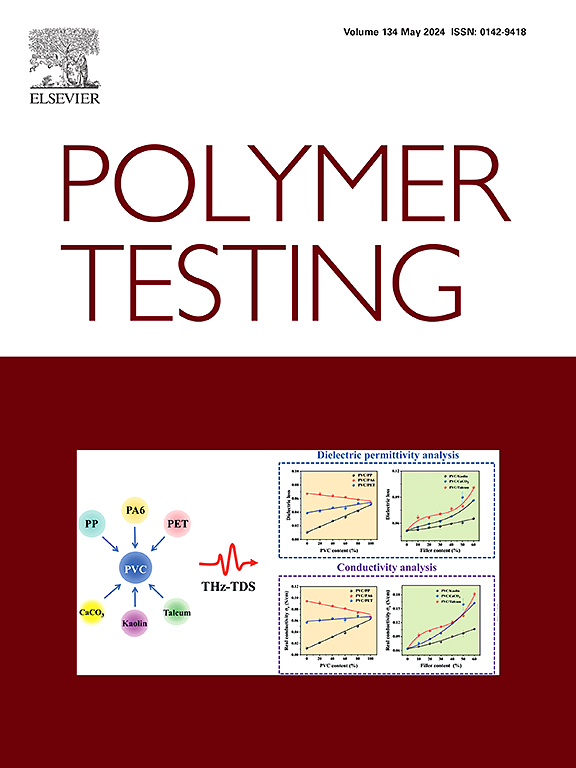The reinforcement of deep eutectic solvents/silica/natural rubber wet acid-free masterbatch on devil's triangle performance of green tires
IF 5
2区 材料科学
Q1 MATERIALS SCIENCE, CHARACTERIZATION & TESTING
引用次数: 0
Abstract
To solve the problems of poor dispersion of silica in natural rubber, and the mutual constraints between abrasion resistance, rolling resistance and wet skid resistance of green tires, two new green deep eutectic solvents (DES) and the DES-silica/NR wet masterbatch were prepared through acid-free flash drying technology, the effects of DES types and wet mixing technology on Payne effect, mechanical properties and devil's triangle performance prepared from NR/silica basic formula and SSBR/NR/silica semi-steel green tire formula were investigated. FTIR proved that DES improved the dispersion of silica in NR and increased the filler-rubber network structure. In the NR/silica basic formula, the Payne effect decreased, the silanization reaction index and the aging resistance improved after DES replaced Si69, meanwhile, DES1 had higher processing safety and comprehensive performance than DES2. In the SSBR/NR/silica semi-steel green tire formula, compared with dry mixing, DES-silica/NR masterbatch group's Payne effect is reduced by 82 %, compression fatigue temperature rise is reduced by 17.5 °C, abrasion resistance and tensile product coefficient are improved by 21 % and 28 %, respectively, while having lower rolling resistance and higher wet skid resistance, widening the devil's triangle performance of green tires.

求助全文
约1分钟内获得全文
求助全文
来源期刊

Polymer Testing
工程技术-材料科学:表征与测试
CiteScore
10.70
自引率
5.90%
发文量
328
审稿时长
44 days
期刊介绍:
Polymer Testing focuses on the testing, analysis and characterization of polymer materials, including both synthetic and natural or biobased polymers. Novel testing methods and the testing of novel polymeric materials in bulk, solution and dispersion is covered. In addition, we welcome the submission of the testing of polymeric materials for a wide range of applications and industrial products as well as nanoscale characterization.
The scope includes but is not limited to the following main topics:
Novel testing methods and Chemical analysis
• mechanical, thermal, electrical, chemical, imaging, spectroscopy, scattering and rheology
Physical properties and behaviour of novel polymer systems
• nanoscale properties, morphology, transport properties
Degradation and recycling of polymeric materials when combined with novel testing or characterization methods
• degradation, biodegradation, ageing and fire retardancy
Modelling and Simulation work will be only considered when it is linked to new or previously published experimental results.
 求助内容:
求助内容: 应助结果提醒方式:
应助结果提醒方式:


